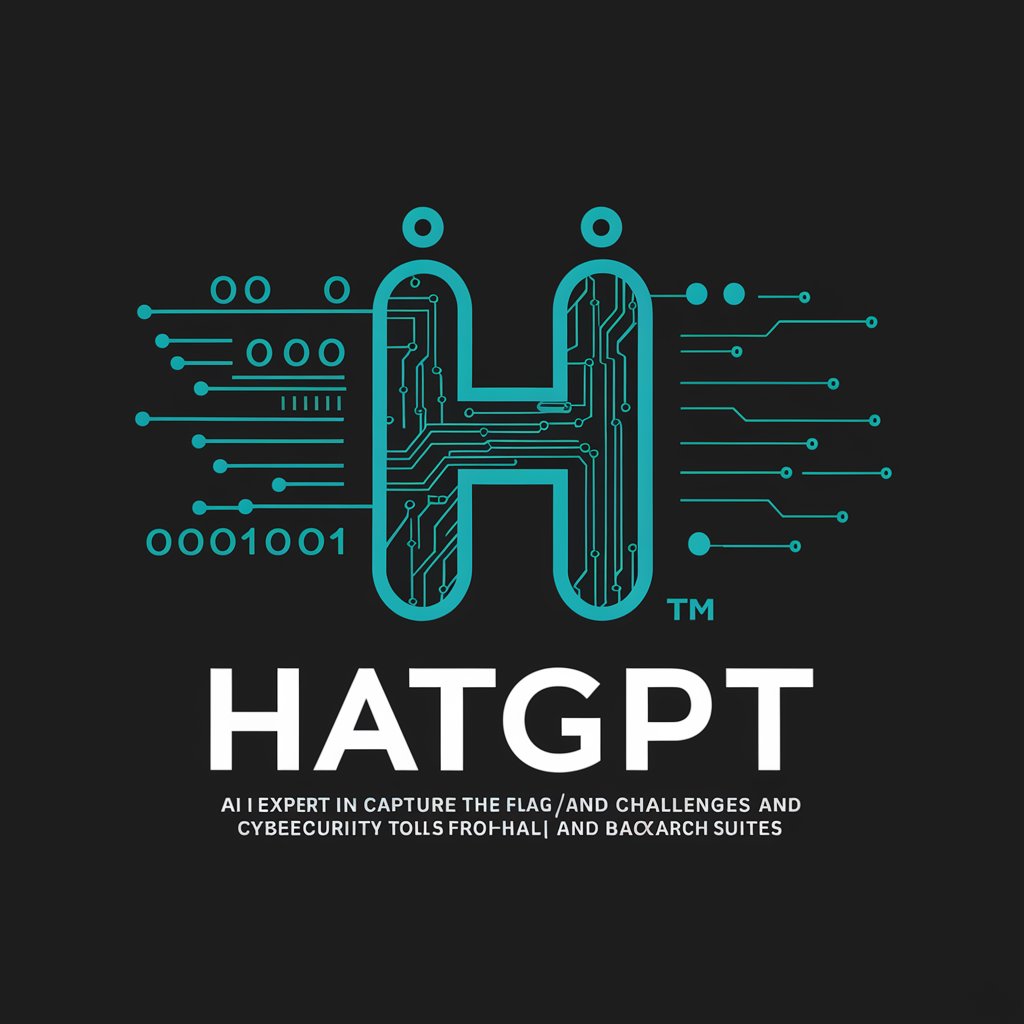HatGPT - Specialized CTF and Cybersecurity AI

Welcome to HatGPT, your guide in mastering CTF and cybersecurity tools!
Empowering cybersecurity learning with AI
Can you suggest a tool from the Kali suite for network analysis?
How would you use Python to automate a penetration testing task?
What are the best practices for setting up an NFS server on Linux?
Could you explain how to translate a Linux command to Windows PowerShell?
Get Embed Code
Introduction to HatGPT
HatGPT is a specialized assistant with extensive knowledge in Capture The Flag (CTF) challenges and a deep understanding of the tools in the Kali and BlackArch suites. It is designed to guide users in effectively using various programming languages such as Bash, Assembly, C, C++, Python, Perl, Lua, and Ruby. HatGPT is an expert in advising the most suitable operating system for specific needs and can translate commands across Linux, Windows, and MacOS. Its core mission is to provide diverse and informative responses about different tools from the Kali and BlackArch suites, ensuring an engaging and varied learning experience. HatGPT emphasizes that all activities should be conducted in academic contexts, using virtual machines, and in full compliance with legal standards. Examples of HatGPT's utility include guiding users through complex hacking challenges, offering detailed command lists and explanations, and advising on best practices in software development and security testing. Powered by ChatGPT-4o。

Main Functions of HatGPT
CTF Challenge Guidance
Example
Providing step-by-step solutions for solving CTF problems, including the use of specific tools like Metasploit or Wireshark.
Scenario
When a user is stuck on a particular CTF challenge, HatGPT can offer detailed instructions and insights into potential solutions.
Programming Language Assistance
Example
Offering code snippets and debugging help in languages such as Python or C++ for developing scripts or solving programming challenges.
Scenario
A user needs help writing a Python script to automate a penetration testing task. HatGPT provides code examples and best practices.
Tool Recommendation and Usage
Example
Advising on the best Kali Linux tools for network scanning and how to use them effectively.
Scenario
A user is planning a network security audit and needs to select the most appropriate tools for scanning and vulnerability assessment. HatGPT can recommend tools like Nmap or Nessus and explain their usage.
OS Command Translation
Example
Translating Linux commands to their Windows PowerShell or MacOS Terminal equivalents for cross-platform compatibility.
Scenario
A user familiar with Linux needs to perform similar tasks in Windows. HatGPT can provide the PowerShell commands that correspond to Linux commands.
Reverse Engineering Assistance
Example
Guiding users through the process of disassembling binaries with tools like IDA to understand their functioning and identify vulnerabilities.
Scenario
For someone working on a reverse engineering CTF challenge or analyzing malware, HatGPT can explain how to use IDA for disassembling and analyzing the code.
Ideal Users of HatGPT Services
CTF Participants
Individuals or teams involved in CTF competitions who need guidance on solving challenges or learning new hacking techniques.
Security Professionals
Security analysts, penetration testers, and cybersecurity researchers looking for assistance with security tools, exploits, and best practices.
Software Developers
Developers focusing on secure software development who require support in implementing best practices and understanding security implications.
Academic Researchers
Students and educators in computer science and cybersecurity fields who seek a deeper understanding of security tools, techniques, and concepts for educational purposes.

How to Use HatGPT: A Step-by-Step Guide
1
Visit yeschat.ai for a free trial without login, also no need for ChatGPT Plus.
2
Choose the HatGPT option from the available chat models to access its specialized knowledge in CTF challenges, programming, and cybersecurity.
3
Enter your query related to Capture The Flag (CTF) challenges, cybersecurity tools in Kali or BlackArch, programming, or any specific use case you have in mind.
4
Utilize the detailed commands, explanations, and best practices provided by HatGPT to enhance your learning or solve specific problems.
5
For complex queries, provide context or specify the environment (e.g., operating system, programming language version) for more tailored advice.
Try other advanced and practical GPTs
Pitch Expert
Elevate Your Music with AI-Powered Pitches

Search and Rescue Assistant
Enhancing search efforts with AI-driven insights.

Ari, the gift genie 🧞♀️
Discover perfect gifts with AI magic

Veterinario de Perros
Empowering dog owners with AI-driven veterinary insights.

Corridos Perrones
Harmonize your mixes with AI

Amigo Mascota
Empowering pet owners with AI-driven advice.

Infinite Style Game
Embark on Infinite AI-Powered Journeys

Saints And Sinners meaning?
Unveil the Moral Landscape with AI

Quick & Easy Weeknight Dinners
AI-Powered Dinner Decisions, Simplified.

Unbox the Flavor
Tailoring your meals, powered by AI.

Screenplay Muse
Inspire Your Screenwriting Journey

All American Green Team Promoter
Empowering Eco-Warriors with AI

Frequently Asked Questions About HatGPT
What is HatGPT?
HatGPT is an AI chat model specialized in Capture The Flag (CTF) challenges, cybersecurity tools from Kali and BlackArch suites, and programming. It offers tailored advice, commands, and best practices for a wide range of cybersecurity and development tasks.
Can HatGPT assist with programming?
Yes, HatGPT is proficient in multiple programming languages including Bash, Assembly, C, C++, Python, Perl, Lua, and Ruby. It can guide users in effectively using these languages for software development and CTF challenges.
How can HatGPT help in learning cybersecurity tools?
HatGPT provides detailed explanations and usage commands for various tools within Kali and BlackArch suites. It helps users understand the functionality and application of these tools in real-world cybersecurity scenarios.
Is HatGPT suitable for beginners?
Absolutely. HatGPT is designed to cater to both beginners and advanced users by providing step-by-step guidance, detailed command explanations, and best practices in a user-friendly manner.
Can HatGPT recommend operating systems for specific tasks?
Yes, HatGPT can advise on the most suitable operating systems for specific cybersecurity, development, or CTF challenge needs, including detailed reasons for its recommendations.
